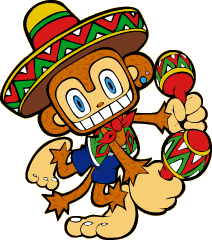
-- Site Features --




With a selection of popular Latin songs, Samba stood out from the rest of the musical rhythm crowd. It does, however, take some degree of courage to shake, shake, shake in public to songs such as La Bamba and Macarena. The development team joked that people would only play the game drunk or in the dark. Doubts aside, development continued and the game hit Japanese arcades in December '99. It enjoyed moderate success, but the possibility of a home version was doubtful, as the maracas utilized magnetic sensors which were expensive to produce. Nonetheless, R&D commenced and a cheaper, laser-based maraca sensor was developed. The home version for Dreamcast was released in April, 2000, and while two songs had to be removed due to legalities, more were added along with downloadable content. Neither version of Samba de Amigo performed tremendously well, but, as usual, the game was extremely well-received by critics and fans. In late 2000, an enhanced version called Samba de Amigo Ver. 2000 was released in arcades and on Dreamcast. In addition to a plethora of new songs, the star attraction was the new Hustle mode, in which players swing the maracas as well as shake them.


Written by Jared "Green Gibbon!"
Matte. Hosting provided by Emulation Zone and
Emulation World. |












